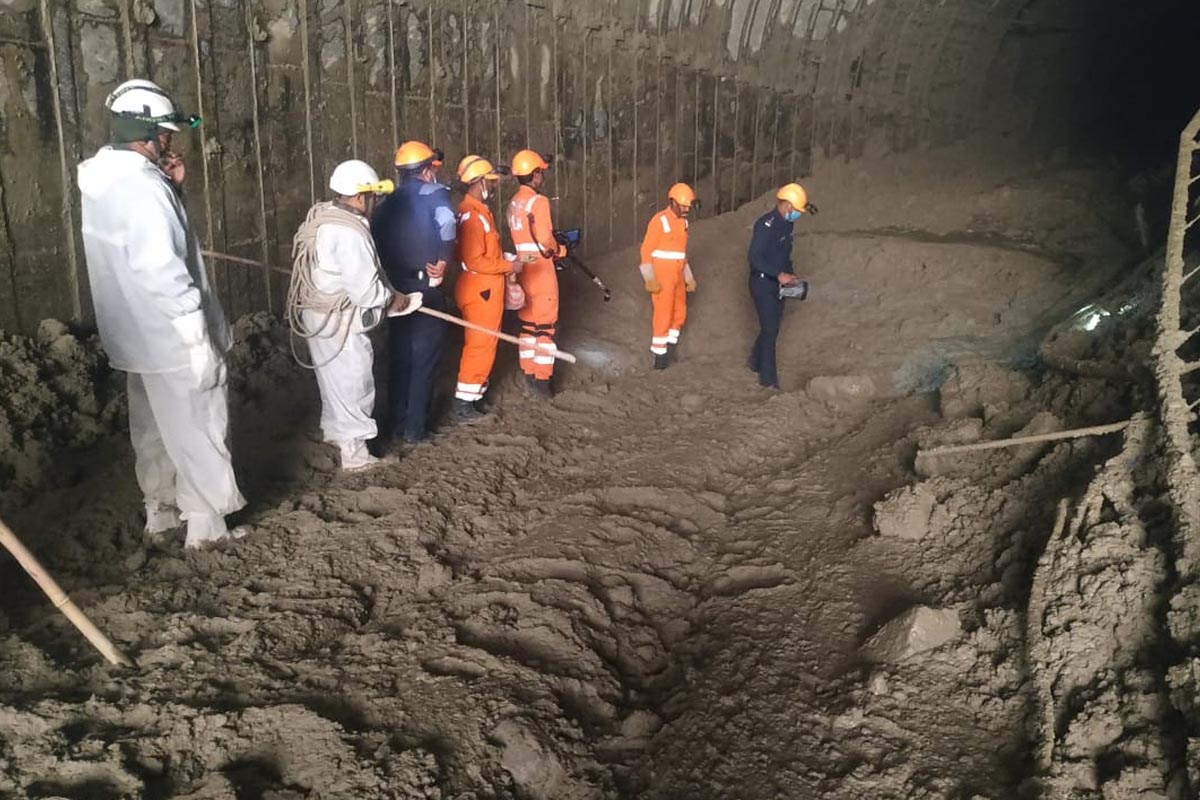The rescue operations are still underway on Saturday at the tunnel in Joshimath of Chamoli district of Uttarakhand after the glacial burst and flash floods.
Joining the rescue operations is the joint team of State Disaster Response Force (SDRF), National Disaster Response Force (NDRF), Indo-Tibetan Border Police (ITBP) and other teams.
Chamoli District Magistrate Swati Bhadoriya on Saturday informed that so far, a total of 38 bodies have been recovered in the Uttarakhand glacier burst incident out of which 12 bodies were identified and 26 remain unidentified.
Earlier on Friday, a lake has been formed near Raini village in Joshimath following the glacier burst causing massive destruction.
“We have information about a lake that has been formed near Raini village in Joshimath. The lake is being monitored through satellites. Right now, we need to be cautious, but there is nothing to be worried about,” said Uttarakhand Chief Minister Trivendra Singh Rawat on Friday while talking to media.
A glacier broke in the Tapovan-Reni area of Chamoli District of Uttarakhand on Sunday leading to massive flooding in Dhauliganga and Alaknanda rivers and damaged houses and the nearby Rishiganga power project.
Massive search and rescue operation was launched to save trapped workers from the Tapovan tunnel in Chamoli on Monday. The Uttarakhand government had on Tuesday officially confirmed that about 200 workers remain missing in the flash flood.
A flash flood in the Rishiganga river created havoc near Reni village in district Chamoli on Sunday. The Rishiganga and Tapovan power projects were badly affected by the disaster.
Providing a new theory on the flash flood, the Indian Institute of Remote Sensing (IIRS), a constituent unit of Indian Space Research Organisation, claims that the flash flood took place after a landslide triggered a snow avalanche. The institute rejects the earlier theory of the disaster taking place due to glacier burst.
The Dehradun based Indian Institute of Remote Sensing used two images one of 6 February and other of 7 February – to state, “It has been observed from the satellite data of 7 February 2021 in the catchment of the Rishiganga at the terminus of the glacier at an altitude of 5,600 Mts, a landslide triggered a snow avalanche covering 14 sq. km and causing a flash flood in the downstream of the Rishiganga.”
(With PTI inputs)











